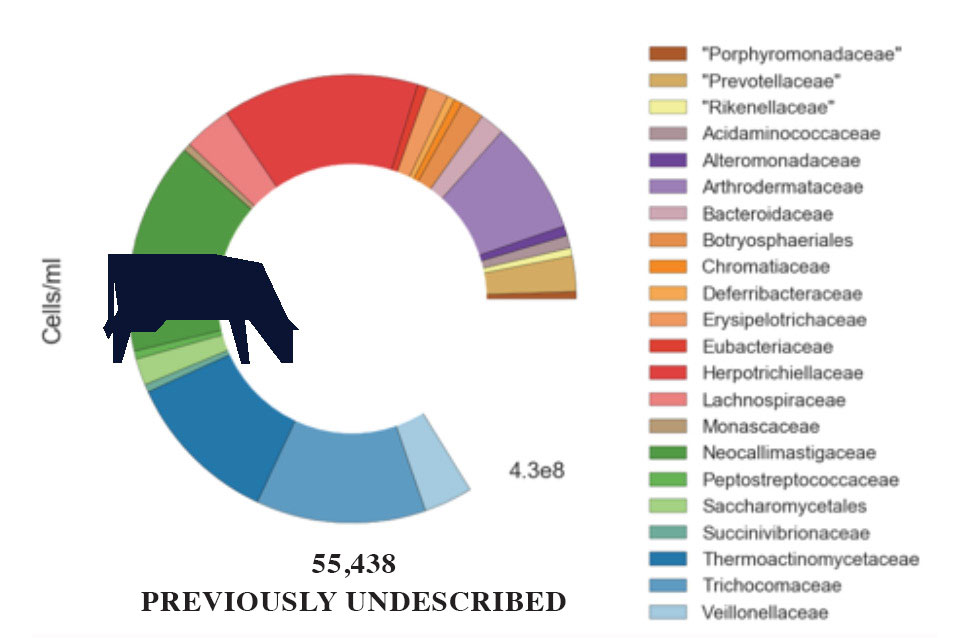Dairy cows have the incredible capacity to upcycle recalcitrant plant matter into nutritious milk. They do this with their secret weapon: the dairy cow rumen microbiome. For years, the rumen microbiome remained a black box, but recent advances in biotechnology (including high-throughput DNA sequencing and advanced bioinformatics) have allowed researchers to characterize the types, functions, and amounts of microorganisms native to the dairy cow rumen. We now know that each cow has a dynamic community of thousands of unique microbial species in its rumen, together representing a community of over 10,000,000,000,000 (10 trillion!) microbial cells that are actively competing and collaborating to ferment tough silage into accessible energy for the cow.
How the Microbiome Works
The rumen microbiome evolved with the dairy cow, and many of the microorganisms in the rumen aren’t found anywhere else on Earth. Some of these microorganisms can perform specific chemistries necessary for the dairy cow to catabolize (or break down) formidable feed through the use of complex cellulolytic enzymes evolved to digest cellulose, hemicellulose, and resistant starch into smaller, more digestible components. Other rumen microorganisms perform biohydrogenation and generate volatile fatty acids, which are the building blocks that the cow uses to generate milk fat.
The Native Approach
At Native Microbials, we performed metagenomic sequencing on over 6,500 rumen samples and found that each cow has its own unique rumen microbiome composition, and that this microbiome changes over time through seasons, parity, and diet shifts. But this large database also allowed us to identify a “core” rumen microbiome — a subset of microorganisms that are found in nearly every cow across almost all conditions*.

Connecting Data & Science
Due to the rumen microbiome being so critical for digesting feed, we reasoned that by identifying keystone species, we could create a product to increase digestibility. We used patented machine-learning algorithms on the metagenomic dataset, allowing us to see which microorganisms in the core rumen microbiome are the most influential, and then ranked these microorganisms by their relevance to cow health and efficiency. We isolated these microorganisms from healthy rumen fluid samples under strict anaerobic conditions and performed in-depth genomic and physiological characterizations on each strain.
Preserving the Microbes
Isolating these microbes is only half the battle, as there must be a practical way to get these sensitive, oxygen-intolerant microbes to survive being added to the feed of a dairy cow so they can be alive when they reach the rumen. To achieve this goal, we developed a novel method, preservation by vaporization, that puts microbes into suspended animation. As long as the product stays dry, these microbes are stable without refrigeration for up to a year and can be mixed into the TMR for efficient delivery.
The rumen microbiome is what makes a cow a cow, allowing us to upcycle food waste through a complex bioreactor on legs. In our next blog, we’ll discuss the effects of optimizing the rumen microbiome with Galaxis, our microbial dairy cow supplement that helps improve rumen digestion for more energy production across the herd.
For more information about Native Microbials and Galaxis, contact info@nativemicrobials.com.
*Wallace, R. John et al. “A heritable subset of the core rumen microbiome dictates dairy cow productivity and emissions.” Science Advances 5.7 (2019): eaav8391.
